Cornelia Parker

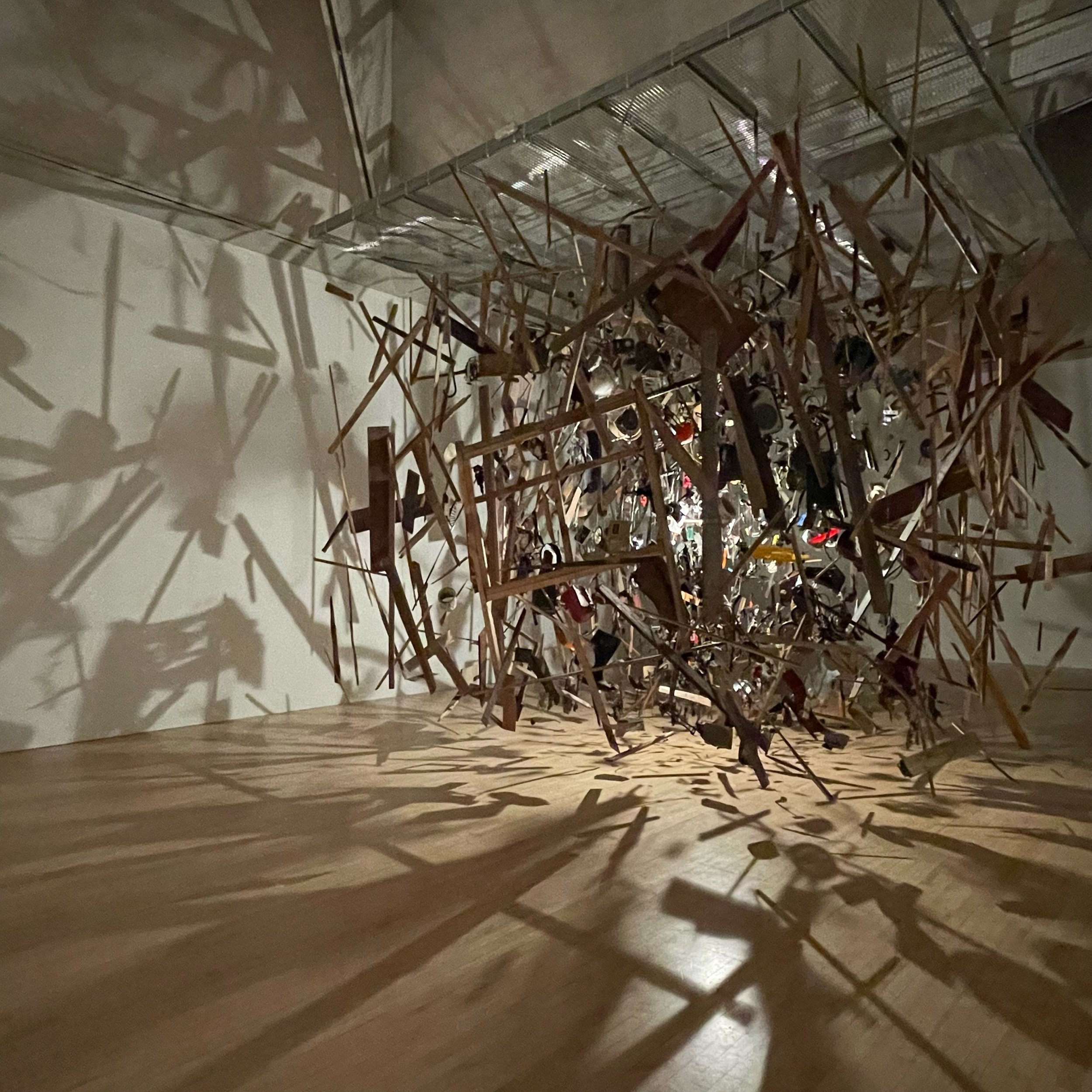
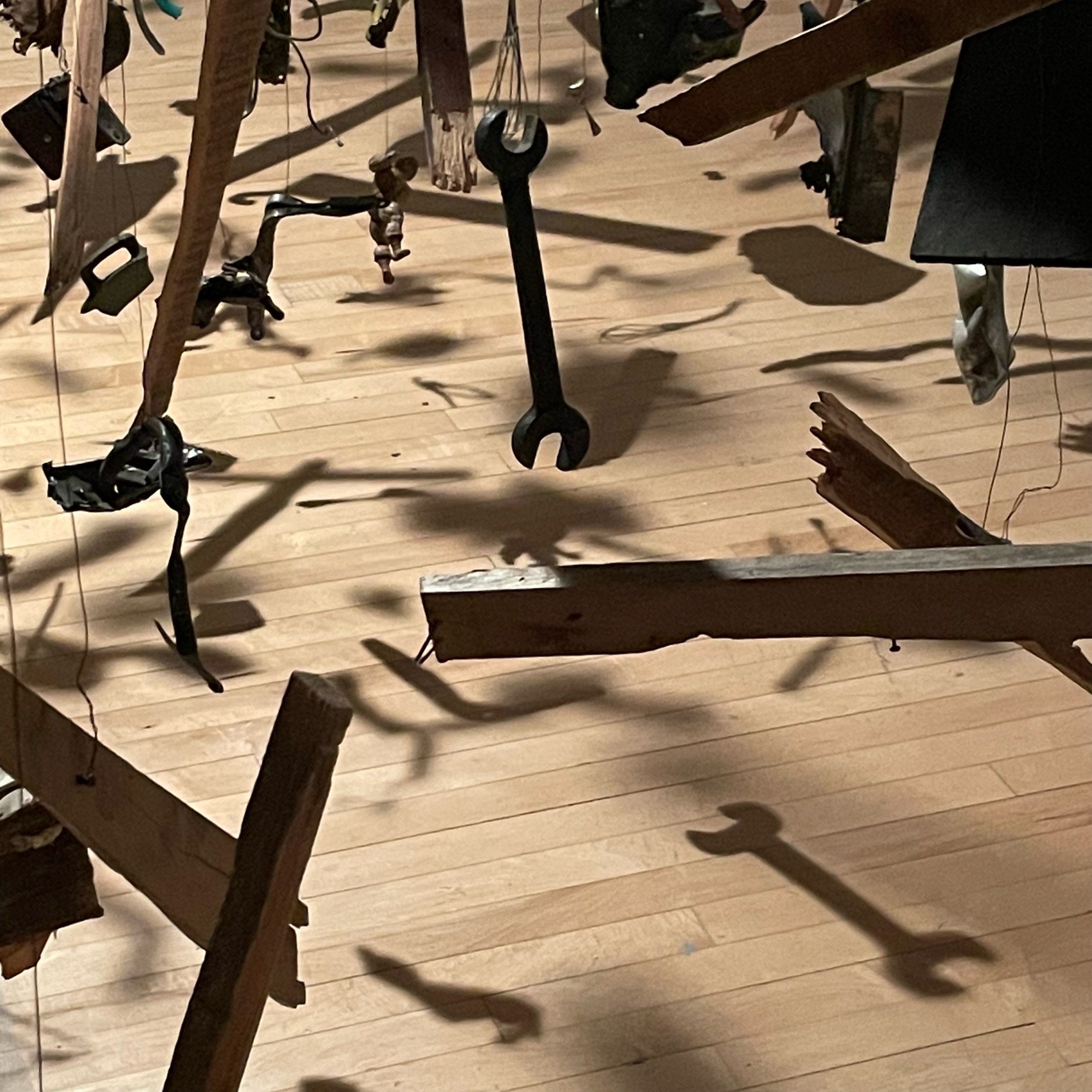

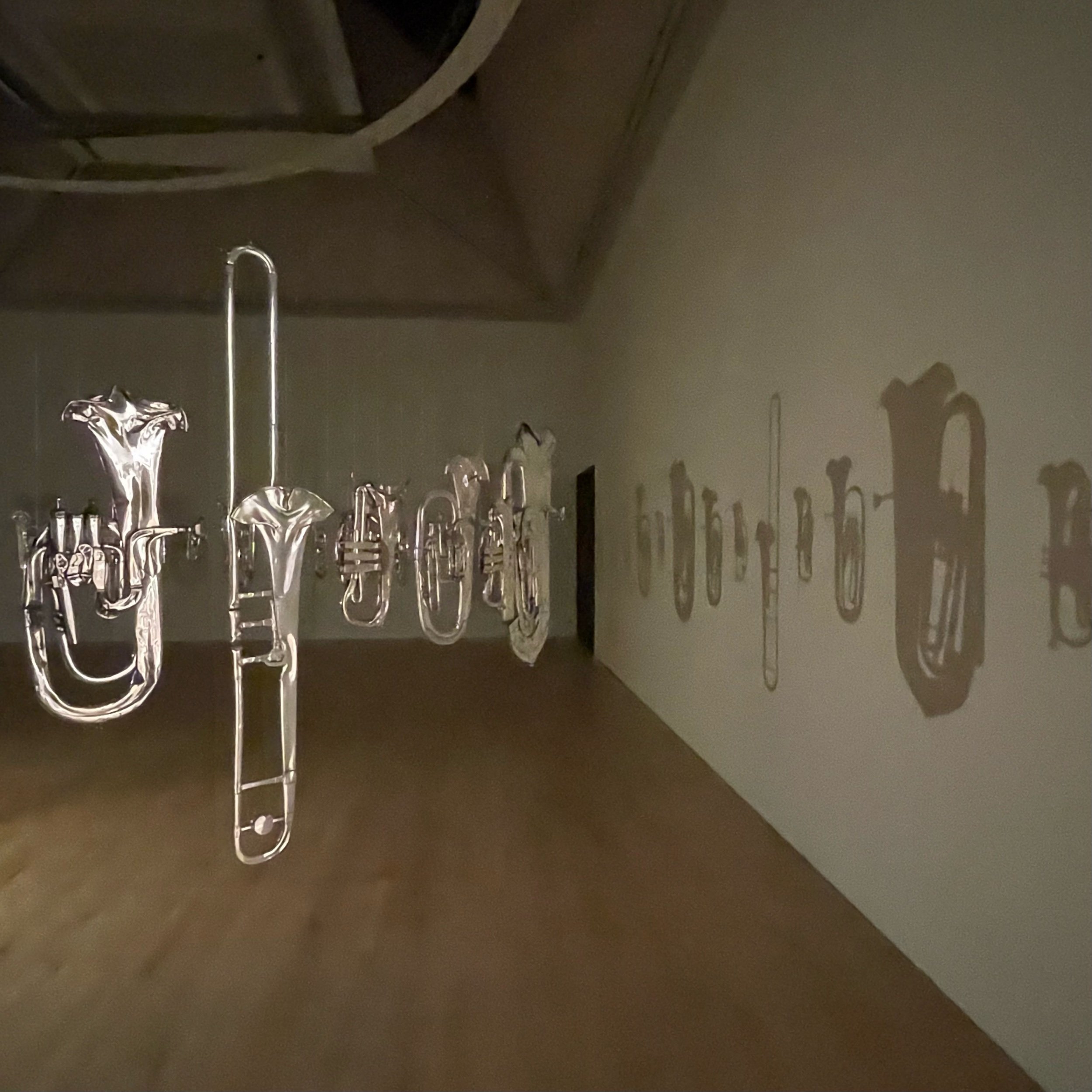

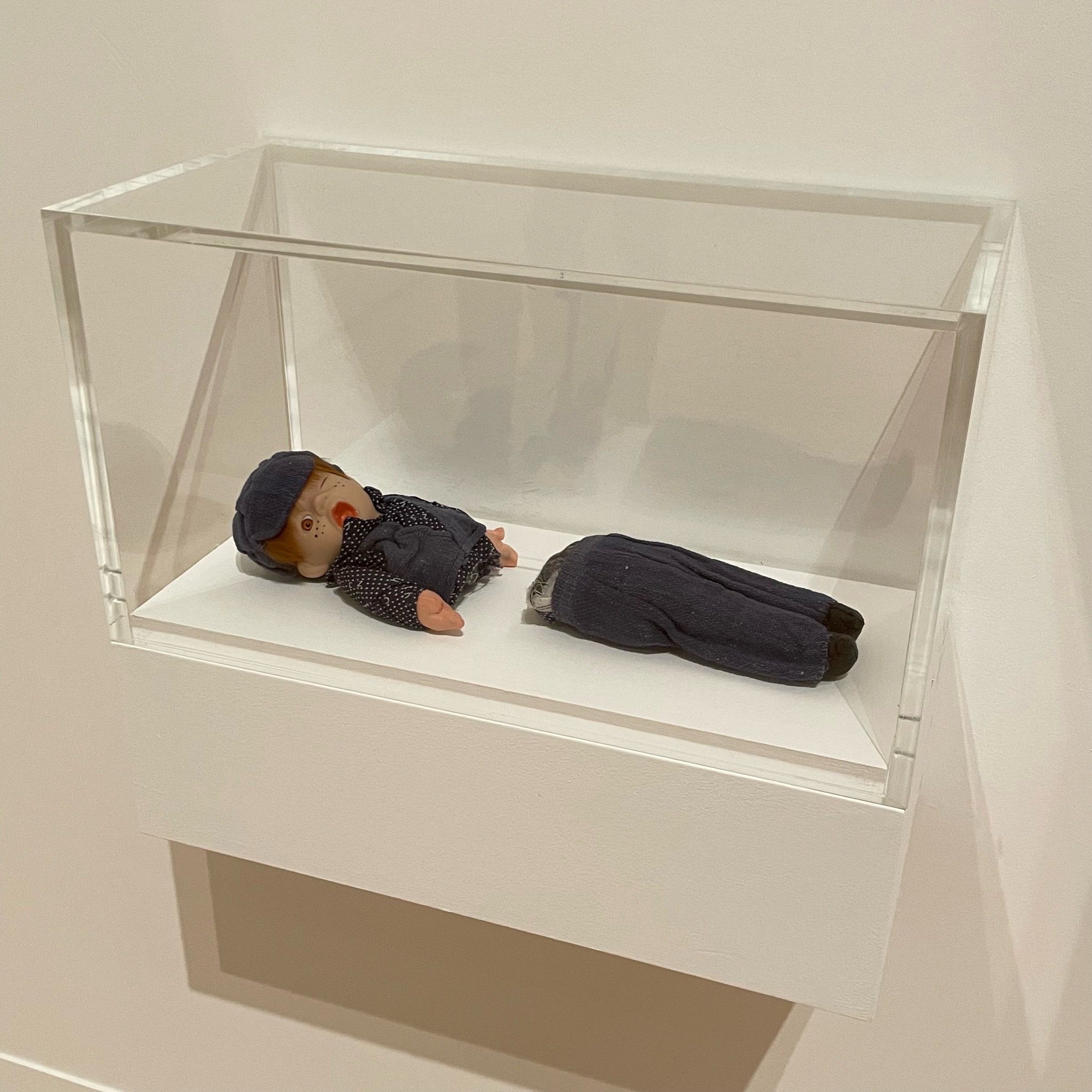
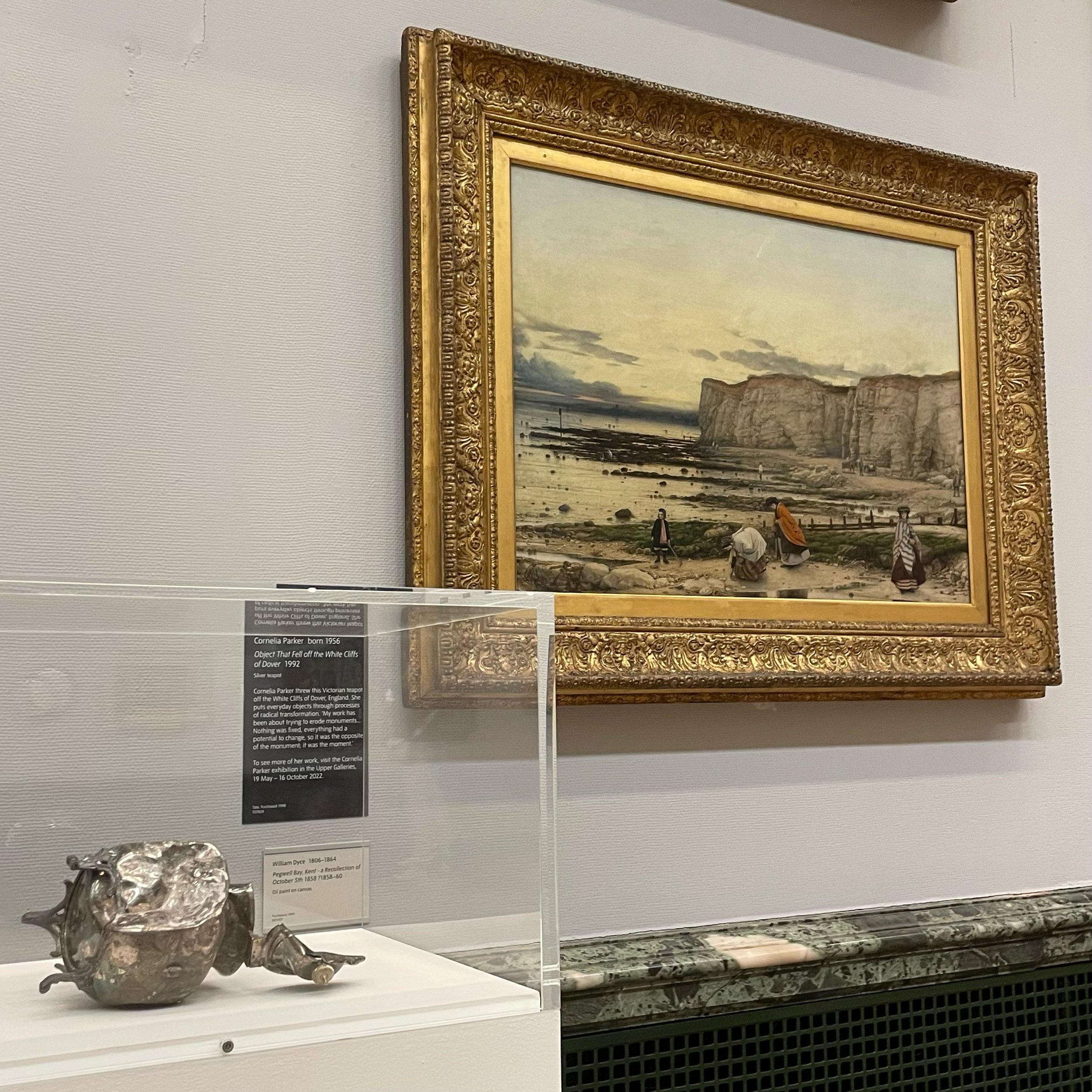
This retrospective will stop you dead in your tracks. The opening room work encompasses so much space that you must quite literally pause and choose which side wall you’ll snake your way along to get to the next room.
What you are carefully navigating around are hundreds of pieces of second-hand silver — teapots, plates, utensils, etc — that have been flattened and arranged into a 6x5 grid of floating pools. If you’ve a brisk pace, your lingering breeze might cause ripple-like waves as you walk on by. (Image 1)
It’s the kind of installation that could elicit days of deep thinking (“What does it all mean?”) or practical sarcasm (“How the hell does Tate keep these so perfectly polished?”) and that’s entirely the point. The British are exceptionally good at turning everyday and often ‘unseen’ things we take for granted into thought provoking works of art.
Parker’s shed (Images 2-3) may be her most explosive hit but it’s the smaller works and sombre rooms that send me into the same inquisitive, contemplative mindset as Rachel Whiteread’s ‘House’ or Martin Creed’s ‘Work No. 227: The lights going on and off’.
Regeneration and the circle of life are just a few themes prompted by the negative space from cemetery paving stones or shadows of musical instruments that will never play again. A blood red tent made from off-cut paper used to make 300,000+ poppies silently echoes massive loss of life. (Images 4-6)
Yet it’s not all doom and gloom. British dry wit is firmly ensconced in Parker’s works, best exemplified in Room 2 where you’ll find a doll cut in half by the guillotine that chopped off Marie Antoinette's head, along with other works that might make you smile before they cause pause for study. (Image 7)
The weaker works — and there are a few — are overtly political. A room pairing videos of Trump with Halloween horror costumes felt lazy and obvious and wasn’t saying anything we don’t already know.
It’s a strong show, but the artist is at her best when she’s most abstract, a fact reinforced by the five works carefully placed throughout the rest of the Tate in conversation with the historical works they reference. (Image 8)
At Tate Britain until 16 Oct.
Visit the Cornelia Parker Wikipedia page or follow @corneliaparkerartist on Instagram for more info about the artist.
